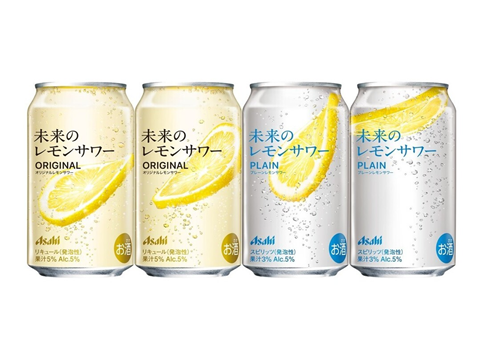
Credit: Asahi Group Holdings, LinkedIn
Asahi has harnessed the release of carbon dioxide when opening its Mirai no Lemon Sour beverage can to float real lemon slices to the surface of the drink, targeting a ‘unique sensory experience’.
Previously, Asahi’s Super Dry Nama Jokki can was designed to feature a fully opening lid. The uneven surface of its inner coating, developed in collaboration with Toyochem, maintains the frothy and foamy texture of craft beer inside the can.
The Mirai no Lemon Sour can builds upon this development by ensuring that, when the lid is fully opened, real lemon slices float to the top of the can. After ‘extensive’ trials, Asahi’s R&D team reports that slices with a 5mm thickness achieve the optimal balance of floating capabilities and manufacturing efficiency.
“The only power source is the force of the escaping carbon dioxide,” explains Tasuku Yamada, manager of Asahi’s New Brand Development Department. “We pursued the thickness of the slices that would float up using this force, and discovered that 5mm was the optimal choice.”
Furthermore, Asahi Breweries has developed a specialized parallel link robot to place lemon slices inside the cans; this has now been incorporated into its factory line.
Asahi also sought to prevent the growth of bacteria or microorganisms on the lemon slices by blending them with liquid sugar before drying them; this means they absorb moisture when submerged in liquid inside the can, which maintains their fresh taste and texture.
“The next issue we had to overcome in commercializing the product was the lemon supply system,” Tasuku Yamada continues. “Since it’s something you put in your mouth, we started by looking for a production area where we could find a stable supply of lemons that had not been treated with chemicals after harvesting.”
Market testing was also undertaken to gauge the product’s quality standards and safety, and to ‘ensure that our innovative packaging resonated with consumers and didn’t just come across as a novelty’.
Asahi emphasizes the value of collaborating across industries and functions, spanning from R&D to market distribution, when innovating new packaging designs.
In similar news, Ardagh Glass Packaging-North America recently introduced a new closure option and bottle colour to its 12oz Heritage glass beer bottle portfolio; the move aspires for a ‘nostalgic look’ while shortening and lightweighting the container, as well as creating a wider label area for more flexible branding opportunities.
Elsewhere in the alcohol sector, Target is now selling Frugalpac’s paper wine bottles. Made from 94% recycled paperboard and a certified recyclable plastic pouch, the Frugal Bottle claims to use 77% less plastic than a plastic bottle; it is also thought to be up to five times lighter and 84% less carbon-intensive than a standard glass bottle.
If you liked this story, you might also enjoy:
The ultimate guide to the Packaging and Packaging Waste Regulation in 2025
How are the top brands progressing on packaging sustainability?
Everything you need to know about global packaging sustainability regulation in 2025
The key to increasing the use of reusable packaging in supermarkets


















No comments yet